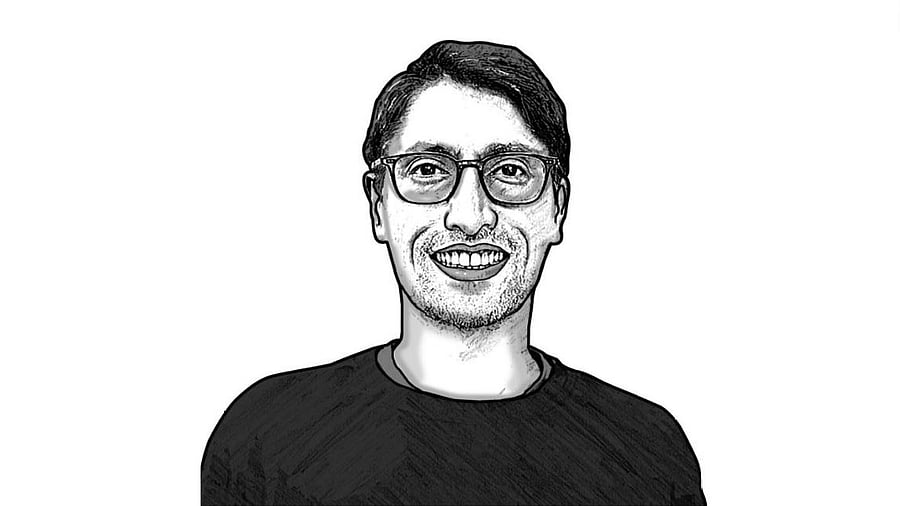
Aakash Singh Rathore as Dr Jekyll is a Professor of Philosophy, Politics and Law, author and editor of over 20 books and counting, and as Mr Hyde, one of India’s top-ranking Ironman triathletes.
Credit: DH Illustration
It’s Dalit History Month, and Ambedkar Jayanti was last week. You know what that means? It’s protest time!
The students at Ashoka University have been ‘getting it on’, like T. Rex’s 1971 glam-rock hit celebrates. Their protest surprised many. Few expect socio-economically privileged students to take such a radical step -- to occupy the central quad of the administrative block, and later, to daringly move their encampment outside the university gate. The press depicted them as ‘spoilt rich kids’, but this is false. Through their demands, the Ashoka students carry forward a decades-long legacy of college youth the world over agitating for progressive change.
Well, you’re an untamed youth/
That’s the truth with your
cloak full of eagles…/
Get it on, bang a gong, get it on.
But what are the Ashoka students’ demands?
One is tied to Ambedkar Jayanti. That is, the Ashoka students want an annual ‘Ambedkar Memorial Lecture’. Importantly, their demand emphasizes that the speaker brought in for the occasion be from the Dalit-Bahujan community, to pre-empt the monopolisation of the lecture by Savarna speakers, as routinely happens at Columbia University and most other institutions. There is presently no recognition of Ambedkar Jayanti at Ashoka. The students are correct that this wrong should be righted.
Another demand is one of relaxation with respect to the fee payment policy. Currently, if a student fails to pay their enrollment fees in time, there is a swift blocking of their access to academic facilities -- they also need to pay hefty late fee. Given that Ashoka is a non-profit, negotiating some kind of solution over this would hardly be difficult. Indeed, the above demands are so readily addressable that one wonders why the students needed to undertake their dharna in the first place. The university administration, however, seems too bothered by the methods to be focused on the content.
Well, you’re windy and wild/
You’ve got the blues in your shoes and your stockings/
You’re windy and wild, oh yeah.
Now, let’s get to the most controversial demand – which was why resorting to protest was necessary: the demand to conduct a campus-wide caste census. The census is a means toward the end of introducing reservation in admissions and hiring at Ashoka. As a private university, Ashoka has no such legal requirement. But the question of what is legally mandated is a very different one from the question of what is socially responsible.
And what of method? Would Ambedkar condone the Ashoka student protests, the method of defiant direct action? Or, rather, was the revolutionary nature of his thought subsumed fully into the ideal of constitutional democracy?
On one side of this debate are those who would present Ambedkar as more statist. This understanding of Ambedkar adheres strictly to constitutional methods, to moving courts, to filing RTIs (or FIRs, if required), to participating in electoral mobilisation and, in sum, using all -- and only -- the political and juridical means appropriate to a democratic republic with free and fair elections and with participatory governance.
The evidence that this side of the debate appeals to is Ambedkar’s November 25, 1949, speech in the Constituent Assembly, in which he implored us to disavow the “grammar of anarchy”; to abandon the often-bloody methods of revolution, civil disobedience, dharnaand satyagraha. If we followed this 1940s Ambedkar, then we, like the Ashoka University administration, would be exhorting the student protesters to forego the dharnaand instead to follow due process, all the grievance remedies accessible through institutional channels.
The other side of this debate, however, is more inspired by the radical Ambedkar of the 1920s and 1930s, with his Mahad revolt, temple-entry movements, and other civil rights campaigns. They favour marches, street protests, dharna and other direct action. For them, experience establishes well-enough the futility of investing hope in institutions. This is due to the systemic representational defects of the electoral process, elite capture of every State organ, and caste-class-gender-community biases rampant in administration.
So, how to determine whether Ambedkar would approve or not?
Perhaps the answer is to be found in the next evolution of his thought: the 1950s Ambedkar. In his final decade, the language Ambedkar used often evoked revolution, but his focus shifted heavily to the practice of loving-kindness: metta or maitri.
Ambedkar resolved ideological differences not with the Brahminical tactics of disregard, deception and violence, but instead with the egalitarian principles of dignity, recognition and metta. These are the very principles that the Ashoka University students are struggling to realise. They may not be doing it the way you like, but at least try to understand them.
Clad in black, don’t look back
and I love you/
You’re dirty and sweet, oh yeah/
Well, you dance when you walk/
So, let’s dance, take a chance,
understand me.